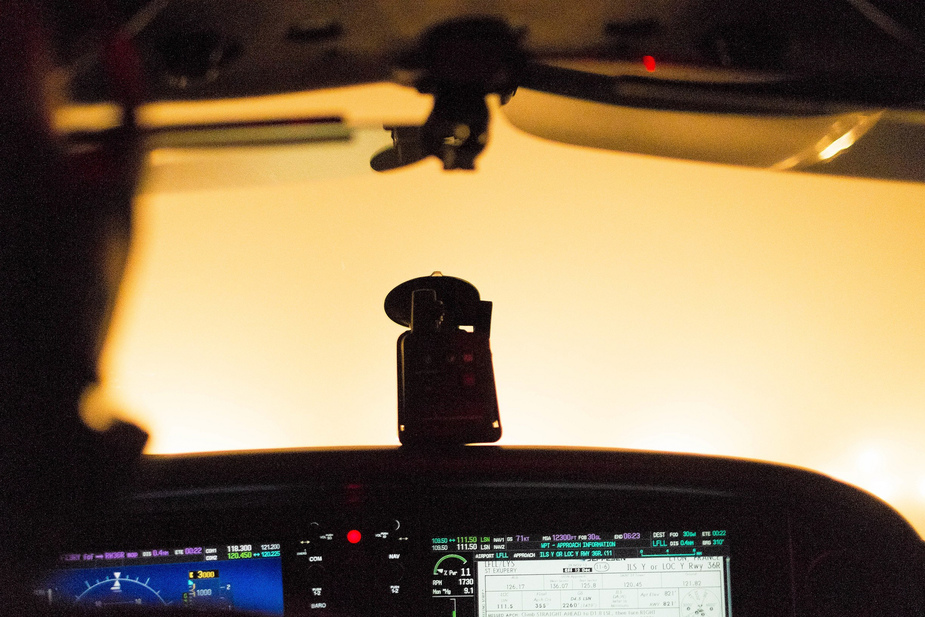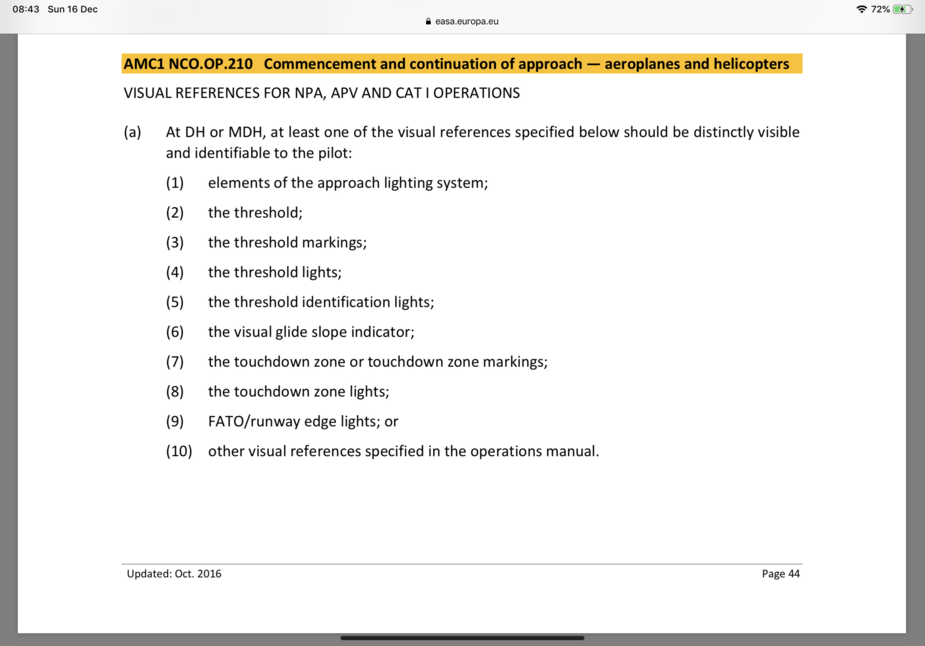2 weeek ago, around Budapest an Austrian registered DA62 landed on a VFR field without any procedure and Legal basis. Landing was in a visibilty of 3 km with the OVC003-005. They were lucky, and brave because police was called for the landing due passport control and they were dumb enough not to know the visual requirement for the VFR field.
On a radar track you can see that they did intentionally an artificial LPV approach. They lied also about the VMC conditions well in cloud our between layers.
No comment.
If i have this right, under EASA a single element of the approach light system, at DH, is sufficient to continue descent?
To judge visibility you would need to know the element spacing, etc.
The required RVR/visibility is only required in order to be allowed to start the approach. At DA you only look to find and see something of the runway environment, which could be just a bit of the approach lights. Now, if you are fully established on the ILS and have your aircraft equipped with synthetic vision, that synthetic vision can help you to know where to expect the runway and thus where to look (taking any crosswind into consideration), which, from my experience, helps a lot. As soon as you see something of the approach lights where you are expecting them, then I see that as a confirmation next to the ILS signal and synthetic vision data. Ideally, the landing is on a major airport with a long runway with high intensive approach lights. There is a risk in going around as well, but at DA the pilot has to make a decision to either go around or to continue the approach if visible with the environment. In my view, the video posted earlier is a borderline case, but we are judging it based on the video.
I am not stating that landing your aircraft in low visibility conditions is without risk and also that there is a lot of room for errors (there is not), but that is not the same as saying that this is illegal. I would not know how it works in FAA land with the visibility/RVR requirements at minima.
Here is a picture from some years ago where I flew from Chambery to Lyon-Bron in a Cirrus SR22T with synthetic vision. I had to divert and was able to get into Lyon Exupery. At DA, all I could see was the high-intensity approach lights below me, which lights I expected to be there and where I was fully established on the ILS. The reported RVR for the first section of the runway was 550 meter. I am not sure why the controller gave me this RVR value because I could not see that far ahead, but felt comfortable to make the landing. Getting off the runway at the right exit was more difficult.

It could very well be that I also need the RVR/visibility of 550 meters at DA, but that would be new to me. I did apply for an LVTO approval with the Dutch authorities and also showed this (and other) pictures at an EASA meeting at their headquarters and that visibility requirement at DA never came up in the discussion. But I know there are some people here that can tell me the exact law. Also, please keep in mind that I do train regularly with an instructor in a simulator on low visibility procedures.
Correct. EASA uses the plural – elements.

I would read that as intended to mean 1 or more elements. Badly drafted…
As for SV, it has to be certified SV, not some depiction on an ipad.
@ Aeroplus, perhaps the reason you were given 550m information was that 550m is minimum RVR visibility for a CAT1 approach and then only if you are either two crew or you have a coupled autopilot certified for such an approach, otherwise you are limited to the single pilot minimum RVR of 800 metres.
Operation below DA/DH or MDA. Except as provided in § 91.176 of this chapter, where a DA/DH or MDA is applicable, no pilot may operate an aircraft, except a military aircraft of the United States, below the authorized MDA or continue an approach below the authorized DA/DH unless -
(1) The aircraft is continuously in a position from which a descent to a landing on the intended runway can be made at a normal rate of descent using normal maneuvers, and for operations conducted under part 121 or part 135 unless that descent rate will allow touchdown to occur within the touchdown zone of the runway of intended landing;
(2) The flight visibility is not less than the visibility prescribed in the standard instrument approach being used; and
(3) Except for a Category II or Category III approach where any necessary visual reference requirements are specified by the Administrator, at least one of the following visual references for the intended runway is distinctly visible and identifiable to the pilot:
(i) The approach light system, except that the pilot may not descend below 100 feet above the touchdown zone elevation using the approach lights as a reference unless the red terminating bars or the red side row bars are also distinctly visible and identifiable.
(ii) The threshold.
(iii) The threshold markings.
(iv) The threshold lights.
(v) The runway end identifier lights.
(vi) The visual glideslope indicator.
(vii) The touchdown zone or touchdown zone markings.
(viii) The touchdown zone lights.
(ix) The runway or runway markings.
(x) The runway lights.
The FAA has a further requirement to descend below 100 feet.
Zsoszu wrote:
around Budapest an Austrian registered DA62 landed on a VFR field without any procedure and Legal basis. Landing was in a visibilty of 3 km with the OVC003-005
Accodring to EASA Part-NCO, no procedure is required. Is there any rule in Hungary, and not contradicting EASA rules, that prohibits this landing?
@RobertL18C: thanks for providing the FAA regulations. I don’t think that the EASA regulation state that I need the minimum RVR at DA in order to continue the approach. I do need to remain visual with the environment if I decide to land.
@gallois: I am pretty sure that the controller gave me the RVR value of 550 in order to help me get in on the diverted flight. Those were for me the minima. The other segments of the same runway were reported as unknown (or a wording like that).
You are not allowed to conduct in VFR. He cancelled the IFR well before, In Hungary you must have TIZ with Class F airspace to conduct IFR approach on uncontrolled field, or go to controlled airport, which was nearby. The airport was closed due to visibility below VMC criteria. Simple human attitude.